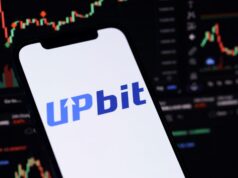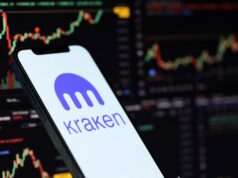The Winklevoss-founded exchange Gemini has officially joined Wall Street, pricing its initial public offering (IPO) at $28 per share. The company raised a capped $425 million, even though demand exceeded the offering by more than twentyfold. Listed under the ticker GEMI on Nasdaq, Gemini made its trading debut on September 12, 2025. Shares surged more than 40% at the open to about $37, before easing back to close near $32 in their first day of trading.
A Rarely Capped, Oversubscribed IPO
Gemini originally set a range of $17–19. It later raised the range to $24–26 as investor demand swelled. Even after pricing at $28, above the increased range, the company capped total proceeds at $425 million. Capping proceeds is unusual for an oversubscribed IPO. Investors oversubscribed the listing by more than 20 times, with strong demand from both institutions and retail buyers.
Why the Cap Matters
Limiting proceeds when books are this strong signals discipline. A hard cap reduces immediate dilution and suggests management believes the company can access capital later on, potentially on better terms. It also keeps a tighter float, which can support price discovery in early trading. For a crypto exchange, that balance between raising growth capital and preserving equity leverage is a key part of the post-listing story.
Retail Gets a Bigger Slice
In a departure from many tech IPOs, Gemini allocated up to 30% of the offering to retail investors across major brokerage platforms. That move aligns with the exchange’s consumer-facing brand. It also builds on the Winklevoss twins’ efforts to frame Gemini as a platform that bridges crypto and mainstream finance. A larger retail presence at the outset may broaden the shareholder base and create a more engaged community around corporate milestones.
Market Context and Comparisons
Gemini’s Nasdaq debut comes amid a broader crypto IPO boom, with peers such as Figure, Bullish, and Circle also entering the public markets this year. Investor enthusiasm suggests renewed appetite for “crypto equities” after a subdued two years. Comparisons to Coinbase (COIN) are inevitable. Gemini remains smaller in trading volume but is pitching its regulatory-first image and diversified revenue as differentiators. If digital-asset prices stay firm and on-chain activity expands, listed exchanges can benefit from higher trading, custody, and staking-related revenues. If volumes soften, fee compression and share shifts toward larger rivals become the core risks.
Who’s Buying and Why
Goldman Sachs and Citigroup led the books. Nasdaq itself invested $50 million via a private placement. For investors, Gemini stock offers direct exposure to the exchange model, but with caveats. The company still relies heavily on trading fees, faces tight competition, and operates in a sector navigating regulatory uncertainty. Supporters argue that Gemini’s compliance-forward approach may give it a smoother path than rivals. Skeptics will look for evidence that revenue can grow beyond cyclical trading ups and downs.
Key Metrics to Watch
Now that Gemini is public, investors will focus on a few simple markers. Reported spot and derivatives volumes will indicate traction versus larger competitors. Net deposits and assets under custody will show whether users are choosing Gemini as a primary venue. Take rate and cost discipline will reveal how much operating leverage the model can deliver. Finally, product mix across retail trading, institutional services, and any wallet or payment lines will shape how resilient revenue proves across market cycles.
What’s Next for GEMI
Attention now shifts to post-IPO performance. Lock-up expirations, quarterly volume data, and regulatory milestones will be key drivers for GEMI stock. The Winklevoss twins have also leaned into bold long-term messaging. They continue to argue that Bitcoin could eventually reach $1 million. Such a statement frames Gemini’s public offering not just as a listing, but as a bet on the future of digital assets. If execution meets expectations, the Gemini IPO could help anchor a broader class of crypto-native equities on major U.S. exchanges.
Readers’ frequently asked questions
How can I buy GEMI shares now that Gemini is public?
Open a brokerage account that offers access to U.S. equities on Nasdaq, search for the ticker GEMI, and place a market or limit order during regular or extended hours. Non-U.S. investors typically need to submit a W-8BEN form and should account for FX conversion and local tax rules.
Is there a lock-up period for insiders and pre-IPO holders?
Yes. Gemini’s IPO includes a standard 180-day lock-up. The exact release timing and any early-release provisions are defined in the underwriting agreement and detailed in the final prospectus (424B4). Review the final prospectus for precise windows and exceptions.
Which SEC filings should I watch now that GEMI is public, and what will they tell me?
Track the 424B4 (final terms and risk factors), 8-K (IPO close and material agreements), 10-Q/10-K (volumes, revenue mix, margins), Form 4 (insider trades), and Schedule 13D/13G (holders over 5%). These appear on EDGAR and most broker research portals.
What Is In It For You? Action items you might want to consider
Calendar the post-IPO catalysts
Add reminders for GEMI’s first earnings call (10-Q), any 8-K updates, and the 180-day lock-up expiry. These dates often drive liquidity spikes and price gaps; being early lets you prepare orders and risk limits.
Build a quick comps view vs Coinbase
Create a simple sheet tracking GEMI vs COIN on revenue mix, take rate, volumes, and valuation multiples. Update it each quarter. A rolling comps snapshot helps you spot mispricings when sentiment swings.
Trade with guardrails
Use price alerts and limit orders (not market orders) around the open and major news. Size positions assuming elevated volatility in the first months after listing, and review borrow availability/fees before considering shorts or options strategies.










